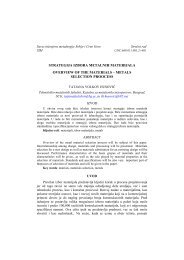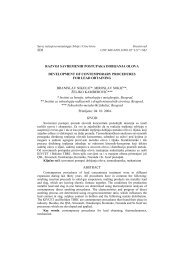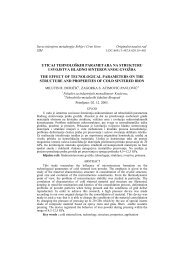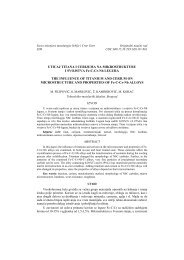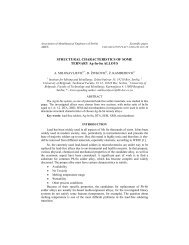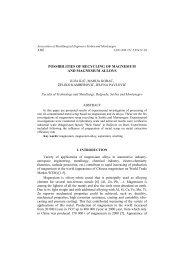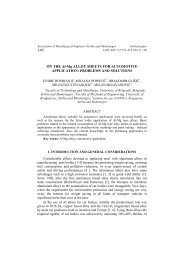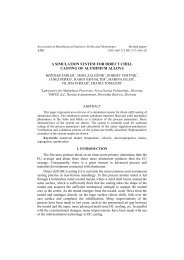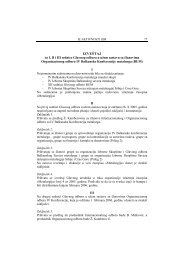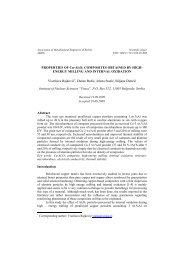THE INHIBITIVE EFFECT OF ETHANOLAMINE ON CORROSION ...
THE INHIBITIVE EFFECT OF ETHANOLAMINE ON CORROSION ...
THE INHIBITIVE EFFECT OF ETHANOLAMINE ON CORROSION ...
Create successful ePaper yourself
Turn your PDF publications into a flip-book with our unique Google optimized e-Paper software.
248 Metall. Mater. Eng. Vol 18 (4) 2012 p. 241-257<br />
Fig. 6 represents the Bode plots of aluminium in 3 wt. % NaCl saturated with<br />
CO 2 , without and with ethanolamine added at different concentrations. The shape of the<br />
Bode plots is related to the thickness and the dielectric properties of the film formed on<br />
the aluminium electrode. In the high-frequency region the phase angle approaches 0°<br />
while in the middle frequency region the capacitive behavior of the system is evident for<br />
all concentrations, determined by the dielectric properties of the formed film. In this<br />
frequency region phase angle is approaching –90°. As it could be seen in Fig. 6 for<br />
inhibitor concentration of 5 mM, besides the peak found around 0 Hz the shoulder at<br />
1000 Hz was observed, indicating the formation of a protective MEA inhibitor film.<br />
According to the Bode plots for aluminium in 3 wt. % NaCl solution it can be<br />
concluded that 5 mM of ethanolamine added provides good protection to the aluminium<br />
surface.<br />
Fig. 6. Bode plots of aluminium in 3 wt. % NaCl saturated with CO 2 , without and with<br />
various concentrations of ethanolamine.<br />
Linear sweep voltametry (LSV)<br />
The anodic and cathodic polarization curves for the corrosion of aluminium in 3<br />
wt. % NaCl without and with different concentrations of MEA are shown in Fig. 7. The<br />
linear Tafel segments of the anodic and cathodic curves were extrapolated to corrosion<br />
potential in order to obtain the corrosion current densities (j corr ). Corrosion current<br />
density, j corr is calculated from the Stern Geary equation (4) where β a and β c are anodic<br />
and cathodic Tafel slopes, respectively, derived from Tafel curves and R p is the<br />
polarization resistance determined from the slope of the potential versus current density




